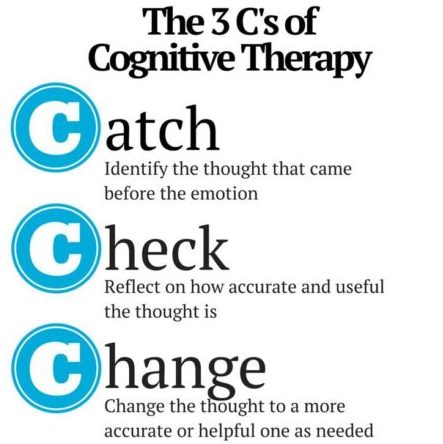Cognitive Behavioral Therapy (CBT).

CBT for Bipolar Disorder: How It Works.
What causes the highs and lows of bipolar disorder? According to a study published in January 2015 in the journal Psychology and Psychotherapy: Theory, Research and Practice, bipolar mood swings are influenced by your thoughts. The researchers found that having extremely negative thoughts may bring on what’s called “descent behaviors” (such as withdrawing from friends) associated with depression, while overly positive thoughts can lead to “ascent behaviors” (such as risk taking) associated with mania.
Practicing CBT may be a way to level out these extremes. “Cognitive behavioral therapy capitalizes on the fact that our thoughts, actions, and emotions are all interconnected and can influence one another,” says Simon Rego, PsyD, director of the CBT Training Program at Montefiore Medical Center/Albert Einstein College of Medicine in New York.
CBT teaches you how to catch, challenge, and change flawed thoughts as well as identify and correct troublesome behavior patterns. For example, imagine your boss emails you saying she wants to talk to you about your latest project. A negative emotional response, such as jumping to the conclusion that she hates your work and that you’re going to get fired, can take you down the path to depression. CBT teaches you to respond to situations with calmer thoughts, such as that your boss may simply want to ask you some questions about your work, which keeps your mood stable. “People often feel better emotionally and attain a better quality of life after undergoing CBT,” Dr. Rego says.
A study published in January 2015 in The British Journal of Psychiatrysupports adding CBT to bipolar disorder treatment. In the study, researchers compared two groups of people recently diagnosed with bipolar disorder. One group received standard treatment, which included medication and support from community groups, a psychiatrist, or a regular doctor. The other group received standard treatment and CBT. The researchers found that the latter group achieved a better, longer-lasting recovery than the group that didn’t receive CBT.
6 CBT Techniques for Bipolar Disorder.
Accepting your diagnosis. The first step is to understand and acknowledge that you have a disorder that’s responsible for your symptoms. This is often difficult for people with bipolar disorder to accept, so teaching the signs, symptoms, causes, and course of the disorder is essential. It helps people embrace the idea of getting help while also knowing they’re not alone, Rego says.
Monitoring your mood. This is often done using a worksheet or journal, which is kept up on a daily basis between sessions and then reviewed with your therapist. People are asked to rate their mood daily on a 0-to-10 scale, in which 0 represents “depressed,” 5 stands for “feeling OK,” and 10 is equivalent to “highly irritable or elevated mood.” The purpose is to become more aware of mood triggers and changes.
Undergoing cognitive restructuring. This process focuses on correcting flawed thought patterns by learning how to become more aware of the role thoughts play in your mood, how to identify problematic thoughts, and how to change or correct them. The therapist teaches the patient how to scrutinize the thoughts by looking for distortions, such as all-or-nothing thinking, and generating more balanced thinking.
Problem-solving frequently. This step involves learning how to identify a problem, generate potential solutions, select a solution, try it, and evaluate the outcome. Typically first taught in therapy, problem-solving is then practiced between sessions. Problems can be in any domain of life, from relationship distress to unemployment to credit card debt. All of these stressors, if not resolved, can put you at greater risk for a lapse.
Enhancing your social skills. Some people with bipolar disorder lack certain social skills, which causes them to feel that they aren’t in control of a certain aspect of their lives. Learning skills such as assertiveness can help you manage interpersonal relationships better.
Stabilizing your routine. Engaging in activities on a regular and predictable basis establishes a rhythm to your day, which helps stabilize your mood. Examples include exercising in the early afternoon, setting a consistent sleep and mealtime schedule, making social plans, and doing chores around the house.